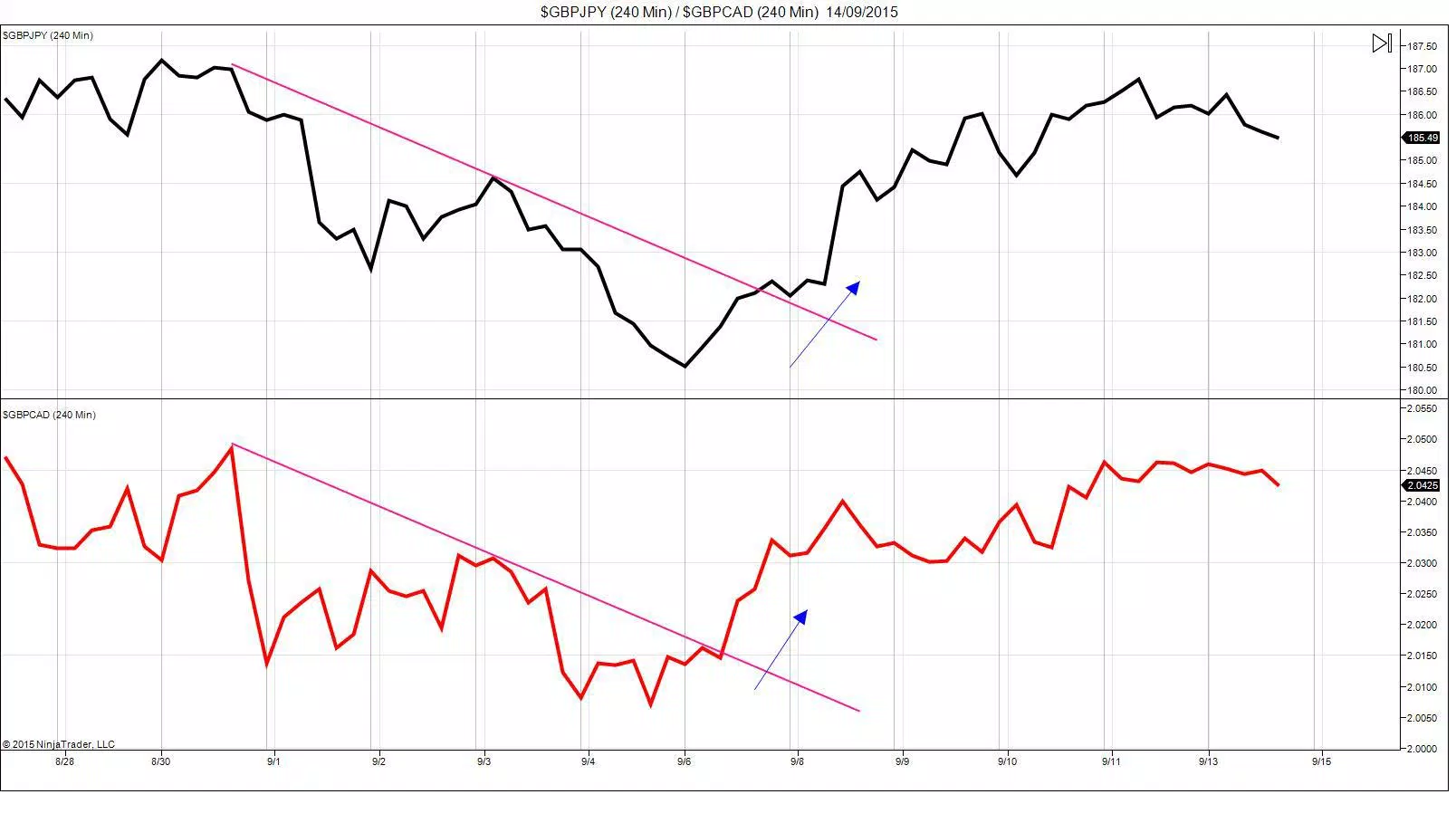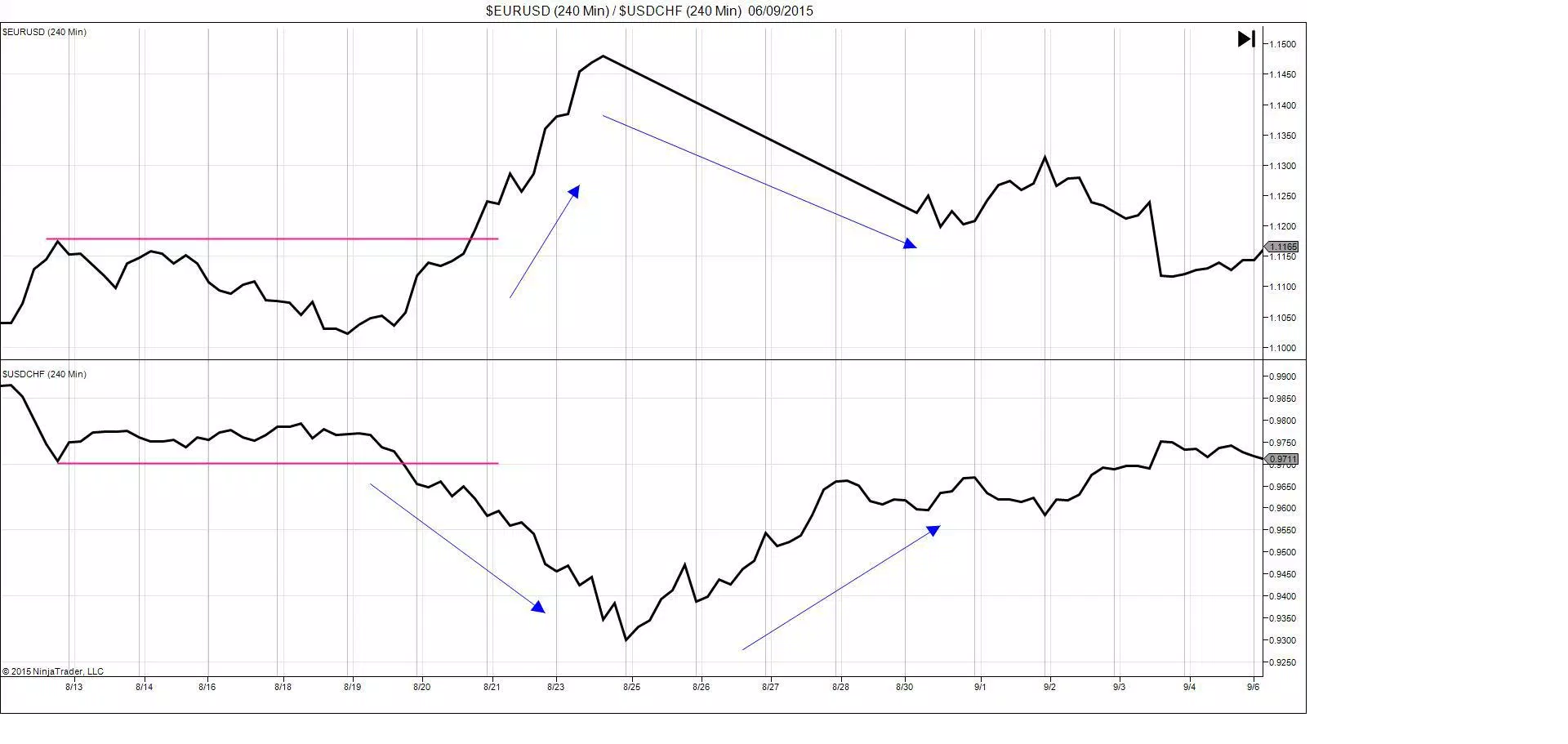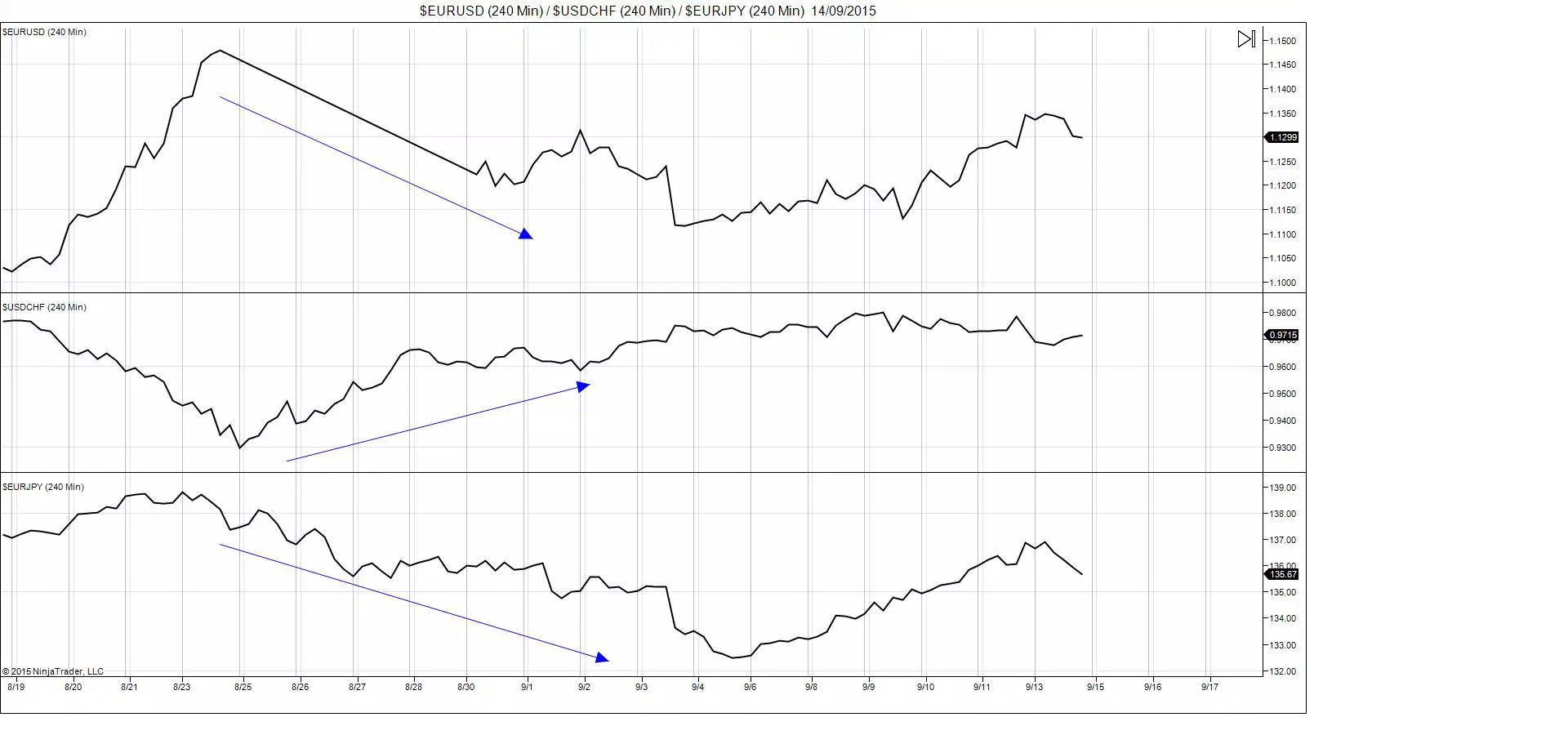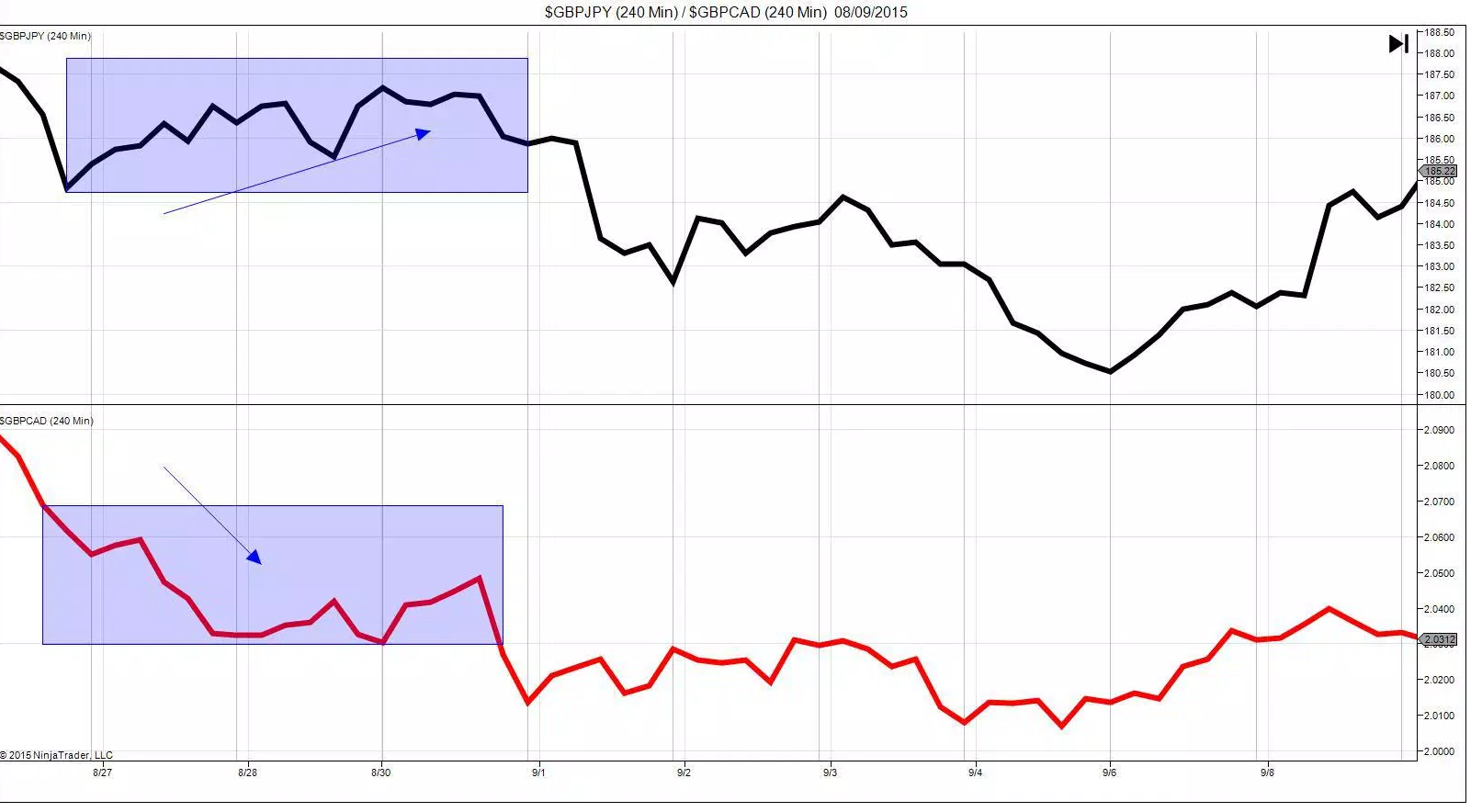What Are Correlations?
A correlation is a measure of the strength of the relationship between two variables, in currency trading correlations measure the strength of the relationship between two currency pairs.Correlations are assigned a numerical value between -100 and + 100 where 100 = a strong positive correlation ( they move in the same direction) and -100 = a strong negative correlation ( they move in different directions). Values around 0 such as -30 or + 40 indicate no real relationship between the two currency pairs and as such they are weakly correlated. Correlations above +70 and below -70 are found to be significant in terms of establishing the presence of a clear correlation.
Using a Forex correlations dashboard such as the one on Myfxbook.com is a great way to keep abreast of the various Forex correlations as shown below.
_20150918080907.png)
How Can We Use Correlations
Understanding and learning to use correlations can create a wealth of opportunities for traders. Where we identify a clear trade setup or clear directional bias in one currency pair, we can then create further opportunities by looking to the currency pairs that display strong correlations with our base pair and trading in the anticipated direction suggested by the correlation.For example, over the last month GBPJPY AND GBPCAD have displayed an 89.1% correlation showing that the two pairs are strongly correlated, as shown in the chart below.
correlations.
_20150918081110.png)
Knowing that these two pairs are tending to move in a very correlated manner over the last month we could wait until we have a clear directional setup in one pair and look to trade the other pair in the same direction also, profiting from the similar directional move.
Movement Not Magnitude
Correlations measure relationships in terms of whether the two pairs trade in the same direction, however they do not measure magnitude and so they won’t necessarily move at the same rate. To get an idea of magnitude of moves, look to use classic volatility measures such as ATR or ADX.Identifying a strong correlation can also allow us to confirm our setups by identifying similar directional setups n both pairs.

In the chart above we can see that both pairs broke out of a bearish trend line at roughly the same time which is a clear indication of bullishness. If one pair was breaking out of a trend line but the other wasn’t this would raise a question mark over the strength of the signal (potential false breakout) and so where we have strongly positively correlated pairs, identifying similar setups allows us to confirm the strength of the move and increase the chances of success in trading the subsequent move.
Whilst we can clearly profit from correlations in the market place, correlations can also help us to protect against losses.
Using GBPJPY and GBPCAD as the example we can see that as they are so strongly correlated our trade is really a position based on GBP and so we can look to monitor the correlations of our trades to ensure we don’t take on unnecessary exposure to one currency. It may be appropriate to have two GBP based trades on at one time but we wouldn’t want five trades on as that would leave us wide open to taking a large loss on an adverse move in GBP. However, strong positive correlations don’t just occur among pairs sharing a base currency. There are a wide number of drivers behind correlations in the Forex markets such as currencies; relationship with the US Dollar, relationship with risk appetite and relationship with commodity flows, to name but a few, so it is important to always check the correlations of trades in your portfolio to make sure you don’t become over-exposed holding a basket of trades all with strong positive correlations.
Useful For Hedging
Leading on from the last point, we can also use correlations to hedge our positions. Where we identify strongly positively correlated pairs as trading in the same direction and so offering the opportunity to increase profits on a move, strongly negatively correlated pairs offer the capacity to provide effective hedging.
The chart above shows EURUSD & USDCHF, two currency pairs which are traditionally strongly negatively correlated. Let’s think about a scenario where we can use this to our advantage.

In the chart above we can see that if we were short EURUSD & EURJPY in the last week of August, we could have used a short USDCHF to hedge some of our risk on those trades expecting that if we had been wrong and EURJPY & EURUSD had in fact moved higher, USDCHF would have moved lower as per the strong negative correlation we identified earlier and thus would mitigate part of our loss so we didn’t take a full hit.
As you can see, there are many ways to use correlations in Forex to assist you in trading whether in targeting higher profits or looking to protect against and limit losses. One important point to note is that correlations are changeable, they are not fixed and so two currency pairs that share a strong positive correlation one month, may indeed lose that correlation the next so it is important to constantly monitor correlations.
In the chart below we can see a period of “de-correlation” between GBPJPY & GBPCAD where GBPJPY trades higher and GBPCAD trades lower before they return to sharing a strong positive correlation.

Correlations are also different on different time frames and so whilst two currency pairs may share a certain correlation on the 60 minnute charts they may share an entirely different correlation on the weekly timeframe and so again it is important to always monitor correlations specific to your time frame
Forex correlations can be an incredibly useful tool for traders and is certainly an interesting subject, if you want to keep up-to-date on the key fundamental issues shaping these correlations make sure to check out of Forex Morning Report where we highlight the market drivers affecting currencies on a daily basis.
All comments, charts and analysis on this website are purely provided to demonstrate our own personal thoughts and views of the market and should in no way be treated as recommendations or advice. Please do not trade based solely on any information provided within this site, always do your own analysis.
Editors’ Picks
AUD/USD stands firm above 0.6500 with markets bracing for Aussie PPI, US inflation

The Aussie Dollar begins Friday’s Asian session on the right foot against the Greenback after posting gains of 0.33% on Thursday. The AUD/USD advance was sponsored by a United States report showing the economy is growing below estimates while inflation picked up. The pair traded at 0.6518.
EUR/USD mired near 1.0730 after choppy Thursday market session

EUR/USD whipsawed somewhat on Thursday, and the pair is heading into Friday's early session near 1.0730 after a back-and-forth session and complicated US data that vexed rate cut hopes.
Gold soars as US economic woes and inflation fears grip investors

Gold prices advanced modestly during Thursday’s North American session, gaining more than 0.5% following the release of crucial economic data from the United States. GDP figures for the first quarter of 2024 missed estimates, increasing speculation that the US Fed could lower borrowing costs.
Bitcoin price continues to get rejected from $65K resistance as SEC delays decision on spot BTC ETF options

Bitcoin (BTC) price has markets in disarray, provoking a broader market crash as it slumped to the $62,000 range on Thursday. Meanwhile, reverberations from spot BTC exchange-traded funds (ETFs) continue to influence the market.
US economy: Slower growth with stronger inflation

The dollar strengthened, and stocks fell after statistical data from the US. The focus was on the preliminary estimate of GDP for the first quarter. Annualised quarterly growth came in at just 1.6%, down from the 2.5% and 3.4% previously forecast.
RECOMMENDED LESSONS
Making money in forex is easy if you know how the bankers trade!
Discover how to make money in forex is easy if you know how the bankers trade!
5 Forex News Events You Need To Know
In the fast moving world of currency markets, it is extremely important for new traders to know the list of important forex news...
Top 10 Chart Patterns Every Trader Should Know
Chart patterns are one of the most effective trading tools for a trader. They are pure price-action, and form on the basis of underlying buying and...
7 Ways to Avoid Forex Scams
The forex industry is recently seeing more and more scams. Here are 7 ways to avoid losing your money in such scams: Forex scams are becoming frequent. Michael Greenberg reports on luxurious expenses, including a submarine bought from the money taken from forex traders. Here’s another report of a forex fraud. So, how can we avoid falling in such forex scams?
What Are the 10 Fatal Mistakes Traders Make
Trading is exciting. Trading is hard. Trading is extremely hard. Some say that it takes more than 10,000 hours to master. Others believe that trading is the way to quick riches. They might be both wrong. What is important to know that no matter how experienced you are, mistakes will be part of the trading process.

